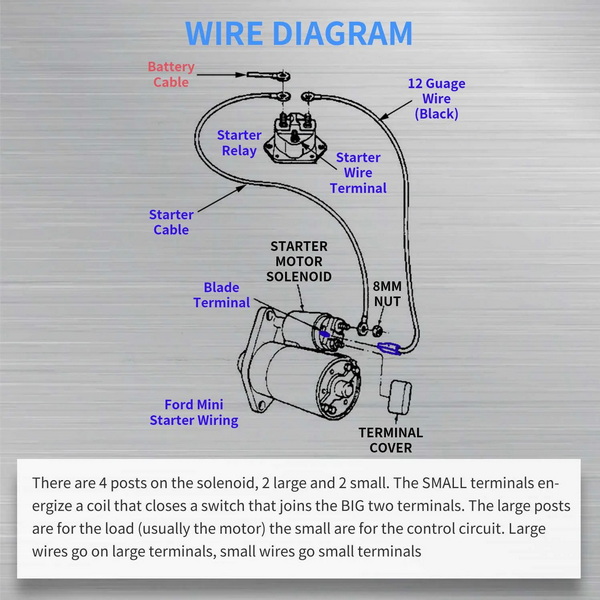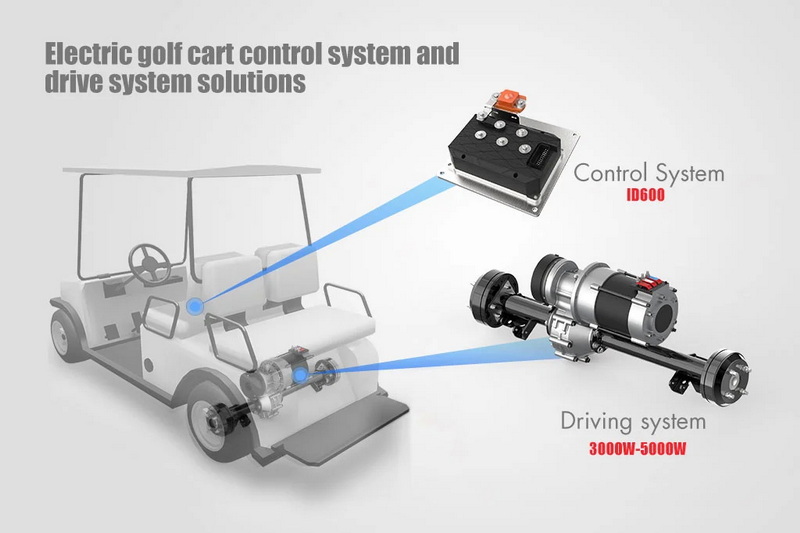Content Menu
● The Basics of Golf Cart Electric Starters
● Components of a Golf Cart Electric Starter
● The Working Mechanism
● The Role of the Solenoid
● Starter Motor Types
● Maintenance and Care
● Common Issues and Troubleshooting
● Advancements in Golf Cart Starter Technology
● Environmental Considerations
● The Future of Golf Cart Starters
● Conclusion
● Frequently Asked Questions
>> 1. How long does a golf cart electric starter typically last?
>> 2. Can I replace a golf cart starter myself?
>> 3. How can I tell if my golf cart starter is failing?
>> 4. Are electric starters used in all types of golf carts?
>> 5. How does the starter in an electric golf cart differ from one in a gas-powered cart?
Golf carts have become an essential mode of transportation in various settings, from golf courses to retirement communities and even some urban areas. At the heart of these convenient vehicles lies a crucial component: the electric starter. Understanding how a golf cart electric starter works can help owners maintain their vehicles better and troubleshoot issues when they arise. In this comprehensive guide, we'll delve into the intricacies of golf cart electric starters, their components, and their functionality.

The Basics of Golf Cart Electric Starters
An electric starter is a device that initiates the engine's operation in a golf cart. It's responsible for turning over the engine, which then allows the combustion process to begin. In essence, the electric starter is what brings your golf cart to life when you turn the key or press the start button.
Components of a Golf Cart Electric Starter
To understand how an electric starter works, it's essential to familiarize yourself with its main components:
1. Electric Motor: This is the powerhouse of the starter system. It converts electrical energy from the battery into mechanical energy to turn the engine.
2. Solenoid: Acting as a high-current relay, the solenoid is responsible for engaging the starter drive with the engine's flywheel.
3. Starter Drive: Also known as a Bendix drive, this component connects the starter motor to the engine's flywheel.
4. Flywheel: This is part of the engine that the starter engages with to turn the engine over.
5. Battery: The source of electrical power for the entire system.
The Working Mechanism
Now that we've identified the key components, let's explore how they work together to start your golf cart:
1. Ignition Signal: When you turn the key or press the start button, an electrical signal is sent to the solenoid.
2. Solenoid Activation: The solenoid receives this signal and closes its internal switch, allowing a large current to flow from the battery to the starter motor.
3. Starter Motor Engagement: As the starter motor receives power, it begins to spin rapidly.
4. Bendix Drive Action: The spinning motor causes the Bendix drive to extend and mesh with the teeth on the engine's flywheel.
5. Engine Turnover: As the starter motor continues to spin, it turns the flywheel, which in turn rotates the engine's crankshaft.
6. Combustion Initiation: The rotating crankshaft moves the pistons up and down in the cylinders, creating the conditions necessary for combustion to occur.
7. Engine Start: Once the engine fires up and begins running on its own power, the ignition system cuts power to the starter motor.
8. Starter Disengagement: The Bendix drive retracts, disconnecting the starter motor from the now-running engine.

The Role of the Solenoid
The solenoid plays a crucial role in the starting process of a golf cart. It acts as a powerful electromagnetic switch that controls the flow of high current from the battery to the starter motor. When activated, it not only allows current to flow but also physically pushes the starter drive gear into mesh with the engine's flywheel.
Starter Motor Types
Golf carts typically use one of two types of starter motors:
1. Direct Drive Starters: These are simpler and more compact. The motor shaft is directly connected to the Bendix drive.
2. Gear Reduction Starters: These use a gear system to increase torque while allowing the motor to spin at higher speeds. They're more efficient but slightly more complex.
Maintenance and Care
To ensure your golf cart's electric starter continues to function properly, consider these maintenance tips:
1. Regular Inspections: Check the starter system connections for corrosion or loose wires.
2. Battery Care: Keep your battery charged and clean. A weak battery can strain the starter motor.
3. Lubrication: Occasionally lubricate the starter drive gear to prevent wear and ensure smooth engagement.
4. Professional Service: Have your starter system checked by a professional during routine maintenance visits.
Common Issues and Troubleshooting
Even with proper maintenance, you may encounter issues with your golf cart's electric starter. Here are some common problems and potential solutions:
1. Clicking Sound But No Start: This often indicates a weak battery or poor connections. Check and clean battery terminals and ensure the battery is fully charged.
2. Grinding Noise: If you hear a grinding sound when starting, the starter drive may not be engaging properly with the flywheel. This could be due to worn teeth on either component.
3. Slow Cranking: This could be caused by a weak battery, corroded connections, or a failing starter motor.
4. No Response When Turning Key: Check fuses, ignition switch, and solenoid connections. The problem could be electrical rather than mechanical.
5. Starter Continues Running: If the starter doesn't disengage after the engine starts, it could be due to a stuck solenoid or a faulty ignition switch.

Advancements in Golf Cart Starter Technology
As technology advances, so do golf cart starters. Some recent innovations include:
1. Smart Starters: These incorporate microprocessors to optimize starting performance and protect against over-cranking.
2. Integrated Starter Generators (ISG): These combine the functions of a starter and an alternator into one unit, improving efficiency and reducing weight.
3. Start-Stop Technology: Adapted from automotive applications, this system automatically shuts off the engine when the cart is stationary and restarts it when needed, conserving energy.
Environmental Considerations
The efficiency of golf cart starters not only affects performance but also has environmental implications. More efficient starters can:
- Reduce battery drain, extending battery life and reducing waste
- Improve overall energy efficiency of the golf cart
- Contribute to lower emissions in gas-powered carts by ensuring optimal starts
The Future of Golf Cart Starters
Looking ahead, we can expect to see continued improvements in golf cart starter technology:
1. Enhanced Durability: Manufacturers are constantly working on improving the longevity of starter components.
2. Integration with Electric Drivetrains: As more golf carts move towards fully electric designs, starter systems will evolve to integrate seamlessly with these new powertrains.
3. Smart Diagnostics: Future starters may include self-diagnostic capabilities, alerting owners to potential issues before they become serious problems.
4. Lightweight Materials: The use of advanced materials could lead to lighter, more efficient starter systems.
Conclusion
Understanding how a golf cart electric starter works is crucial for any golf cart owner or enthusiast. From the initial turn of the key to the moment the engine roars to life, the starter system performs a complex dance of electrical and mechanical processes. By grasping these concepts, you'll be better equipped to maintain your golf cart, troubleshoot issues, and appreciate the engineering that goes into these seemingly simple vehicles.
As technology continues to advance, we can look forward to even more efficient, reliable, and environmentally friendly starter systems in the future. Whether you're cruising down the fairway or zipping through your neighborhood, remember the humble electric starter that makes it all possible.

Frequently Asked Questions
1. How long does a golf cart electric starter typically last?
With proper maintenance, a golf cart electric starter can last anywhere from 5 to 10 years. However, this can vary depending on usage patterns, environmental conditions, and the quality of the starter components. Regular inspections and timely repairs can significantly extend the life of your starter.
2. Can I replace a golf cart starter myself?
While it's possible for a skilled DIY enthusiast to replace a golf cart starter, it's generally recommended to have this done by a professional. The process involves working with high-current electrical systems and can be dangerous if not done correctly. Additionally, improper installation can lead to damage to other components of your golf cart.
3. How can I tell if my golf cart starter is failing?
Signs of a failing golf cart starter include unusual noises when starting (such as grinding or clicking), slow cranking, intermittent starting issues, or the starter motor continuing to run after the engine has started. If you notice any of these symptoms, it's best to have your starter system checked by a professional.
4. Are electric starters used in all types of golf carts?
Most modern golf carts, whether gas-powered or electric, use electric starters. However, some older or very basic models might use manual starting methods. Electric starters are preferred for their convenience and reliability.
5. How does the starter in an electric golf cart differ from one in a gas-powered cart?
In an electric golf cart, the "starter" function is typically integrated into the main drive motor. When you press the accelerator, the motor begins to turn, effectively starting the cart. Gas-powered carts, on the other hand, have a separate starter motor that turns over the engine to initiate combustion. The principles are similar, but the implementation differs based on the power source of the cart.











































